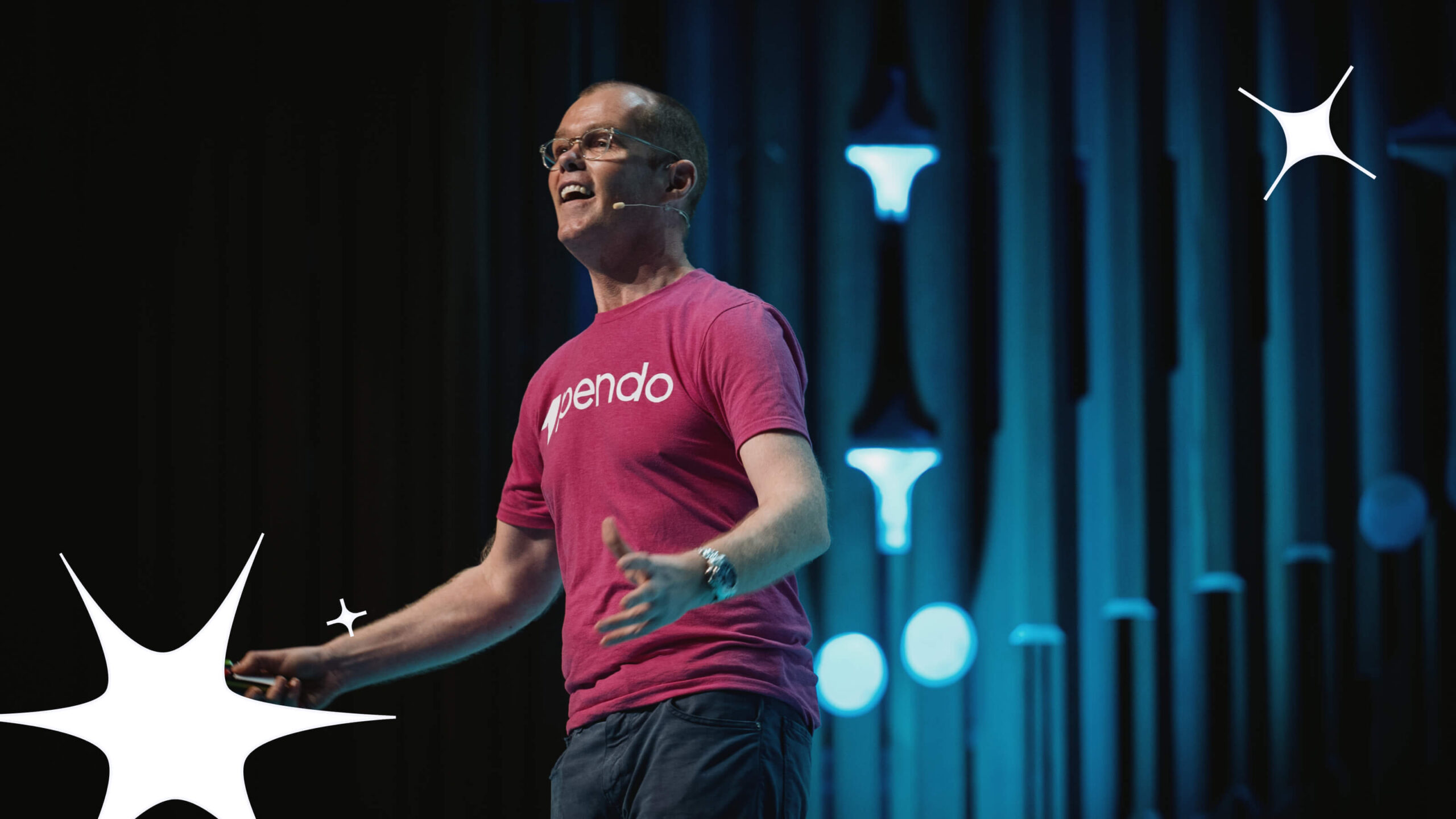It’s time to toss out that 2022 planner and turn over a new leaf: 2023 is coming.
The start of a new calendar year—and for most organizations, the beginning of a new fiscal year—is the perfect time to get your product priorities straight and ensure you’ve got a rock-solid execution strategy in place. And while making a plan that can carry your product through its next trip around the sun may feel daunting, it doesn’t have to be. It should all begin with focusing on a few core priorities—the things that matter most to your business, customers, or users—and backing them up with the right data.
Here are four key considerations to help get your product’s—and your product team’s—year started on the right foot.
1. Align your entire organization around your product strategy
You can’t build and deliver products or features with confidence if you don’t have a clear sense of your product’s “why.” And those same products or features won’t have a fighting chance at long-term adoption or success if they don’t align with your organization’s overarching mission. By painting a clear picture of the role your product has in realizing your company’s vision, you start to lay the necessary foundation for building buy-in for product initiatives and ensuring you’re able to get the resources you need to bring them to market effectively. And that starts with data.
Leveraging a unified product analytics platform like Pendo—and giving teams across your business (not just product) access to it—is a great way to unify your company around a single source of truth and build a culture of data-informed decision making. Defining and democratizing the product KPIs that are most important to your product and business is critical, too. There are many out there to consider, but here are the top ten we recommend as you think about your reporting strategy for 2023.
A strategic product roadmap is another effective way to help unify and align your internal teams—and even external stakeholders. Your roadmap is an opportunity to tell a clear and resonant story about the future direction of your product and your organization. And with a tool like Pendo Roadmaps, you can even correlate specific customer feedback or requests to initiatives on your roadmap. Everyone can then see the full context behind why you’re working on specific features and understand the associated value and impact of those efforts.
2. Use your product to gain operational resilience and efficiency
As much as we may all wish for a miracle, it’s unlikely that we’ll wake up on January 1st to a fully restabilized economy. The reality is that the same need to reduce spending, do more with less, and root out operational inefficiencies will likely follow us into 2023. But that’s not necessarily a bad thing.
Product-led organizations—those who are leveraging their products to deliver critical touchpoints throughout the prospect and customer experience—have already been reaping the rewards of this approach, while also freeing up their workforce to focus on more strategic (and frankly, less tedious) tasks that actually move the needle. And this laser focus on efficiency has led them to develop more sustainable and scalable operating models—like delivering onboarding, driving growth, or offering support inside the product—that add value even outside of a downturn.
Using your product to drive key processes is also a necessary strategy for delivering the kinds of experiences users expect—and will only continue to demand—from the products and companies they interact with every day. And it’s a crucial way businesses of all sizes are building resilience and laying a strong foundation to help them stay ready for anything. For example:
- Restaurant365 achieved a 95% adoption rate of their mobile app thanks to their asynchronous, in-app onboarding program
- LabCorp saw a 99% reduction in their ticket backlog by delivering in-app support
- Citrix boosted user engagement and increased free trial conversions by 60% by personalizing their freemium onboarding experience
- Filevine saved over 1,600 hours of support time and gathered over 2,000 new product ideas in just six months by bringing feedback collection in-app
3. Focus your resources on the right things (and let go of the right things)
Product managers add new features to their products every day… but what happens to older, legacy features that aren’t as useful as they once were or aren’t getting the usage their level of maintenance warrants?
A simple—yet often overlooked—way to free up resources is to audit your product’s features (or for multi-product teams, audit all of the products in your portfolio) and see which you can afford to sunset or depreciate. And again, this begins with data from your product analytics platform. Here are a couple of clues that a feature might be overdue for sunset:
- The feature has low adoption
Your users aren’t using or interacting with the feature. This could indicate that your users don’t understand how to use the feature, or aren’t seeing the value in it. - The feature has low retention
Your users aren’t returning to the feature or area of your product over time. This could indicate that your users have found other, easier ways to complete the task that feature was originally created to accomplish. - Your users have given you certain feedback about the feature
A significant cohort of your users are telling you directly that they don’t need a specific feature, feel as though it’s cluttering their product experience, or are finding increased value in a newer feature. A large number of support tickets or reported bugs around a legacy feature could also be an indicator of a potential candidate for sunset. And by taking these finicky, legacy features off the table, you can free up your product, product operations, and engineering teams’ time for other initiatives.
Sunsetting old areas of your product (or even entire products) isn’t necessarily a simple task: It takes a coordinated effort across your product, engineering, marketing, and customer success teams to do well. But it ultimately keeps your product relevant; allows you to invest in other, higher-value areas of your portfolio; frees up time, budget, and headspace for innovation; and makes more efficient use of your team’s talents.
Check out this Pendo recipe for guidance on how to strategically sunset an old feature and create space for something new in 2023.
4. Personalize the user experience to improve engagement
If you’ve been using social media platforms like Instagram or TikTok, you’ve likely noticed an uptick in the amount of targeted advertisements or sponsored content you see on your feed over the past couple of years. Even when you fire up Netflix or Hulu, you’re met with show suggestions based on content you’ve watched previously. None of this is by accident. B2C companies have long known that personalization is the key to relevancy. And now consumers expect the same of B2B companies, too.
Personalization is critical for driving engagement and building loyalty and empathy with users, particularly at scale. It’s also an effective way to increase conversions or encourage desired behaviors, since directions and calls to action are highly tailored—and therefore more relevant and resonant for a specific target audience.
Together, product analytics and in-app guidance are a personalization powerhouse for your product. Product analytics (paired with qualitative feedback from your users) gives you the complete picture of how your users are engaging with your products and features. Behavior and metadata-based segmentation allows you to define specific groups of users to target. And in-app guidance allows you to deliver tailored and contextual messages to those users to steer them towards ideal behaviors, encourage them to complete a task, or ask them to perform an action as they’re immersed in your product.
Not only does a deep level of personalization yield great results for your business (for example, iRobot saw a 43% increase in engagement with feature announcements, a 50% reduction in time to production, and a 75% reduction in engineering effort around routine in-app messages), it also makes the product experience that much more delightful for your users.
Want to dive deeper into the top five questions all product practitioners and leaders should be asking themselves as they gear up for the new year? Be sure to join Stephanie Tanzar (Sr. Director of Product Management at Pendo) in this Product-led Alliance webinar on January 12, 2023.


